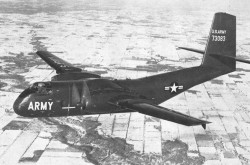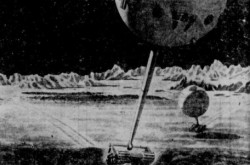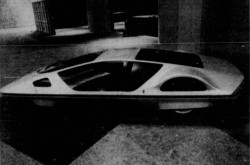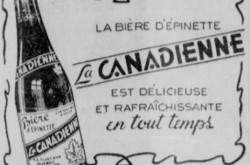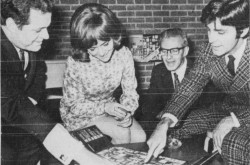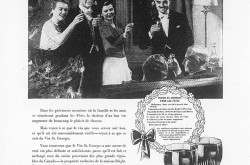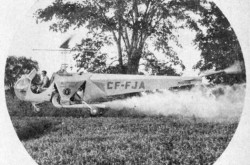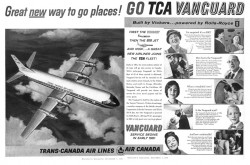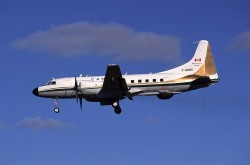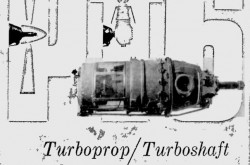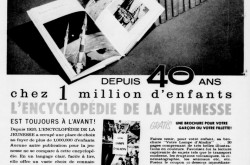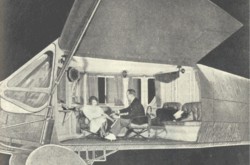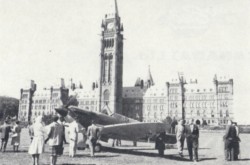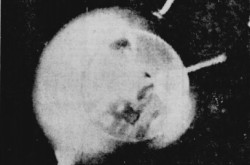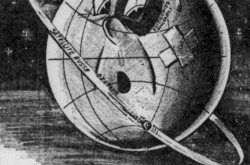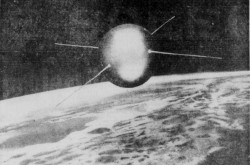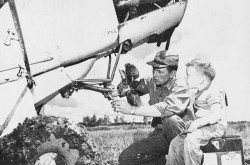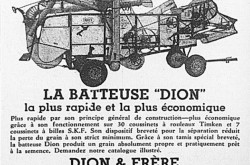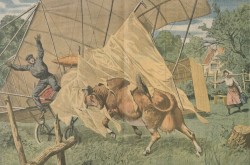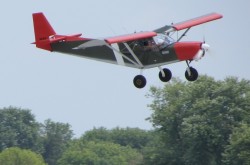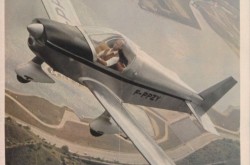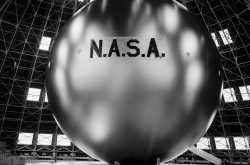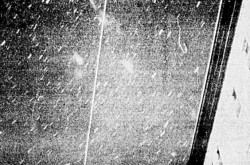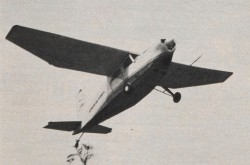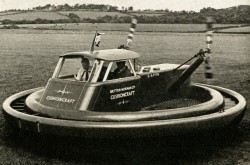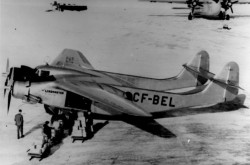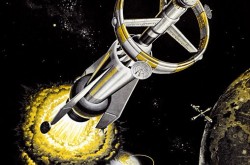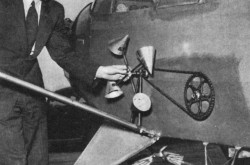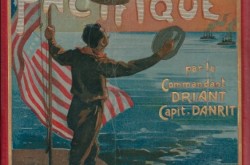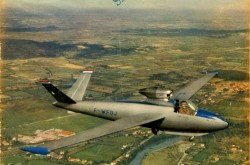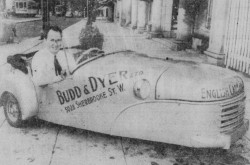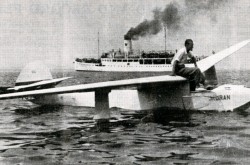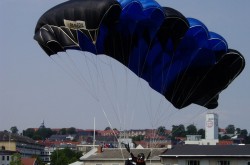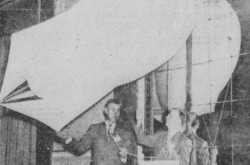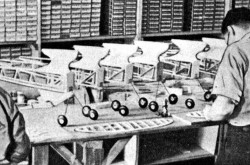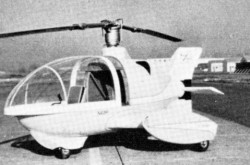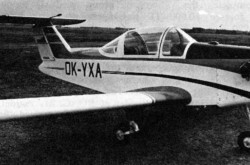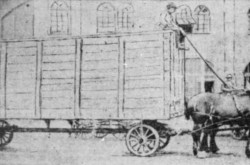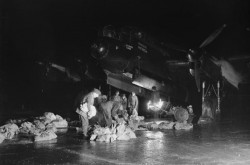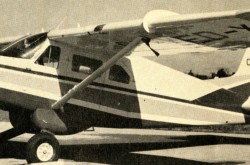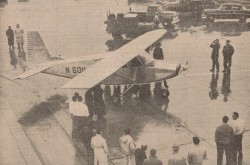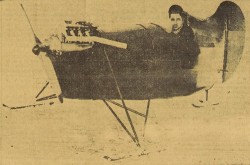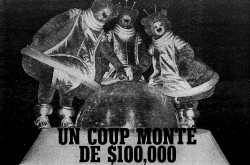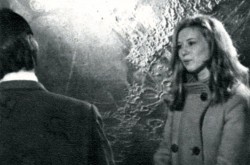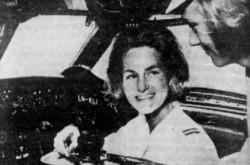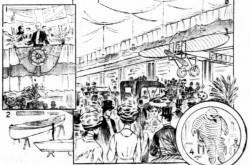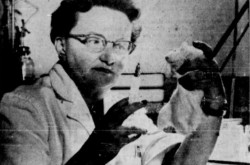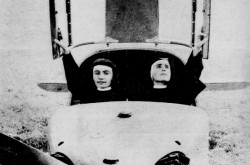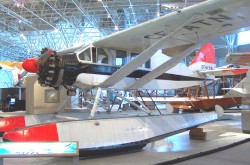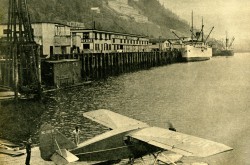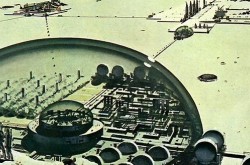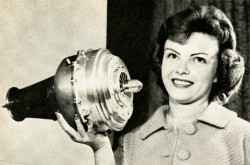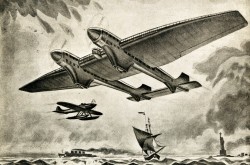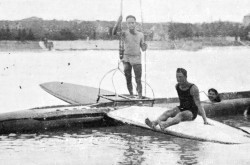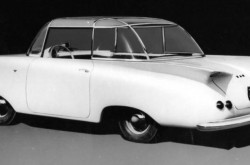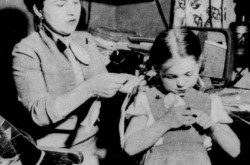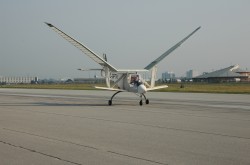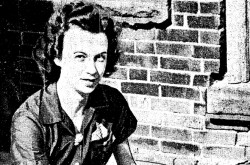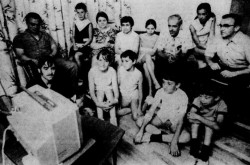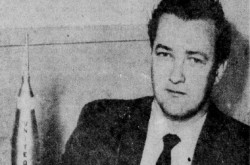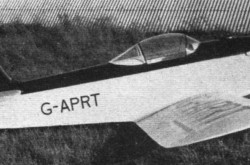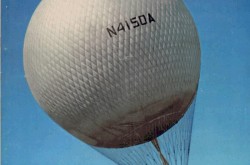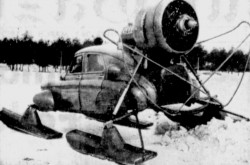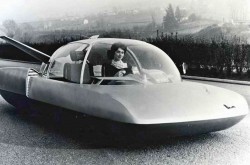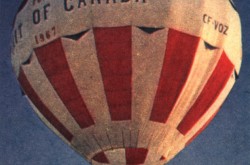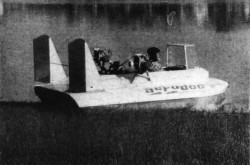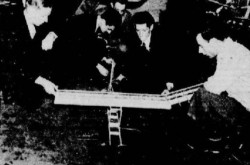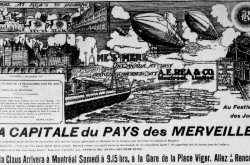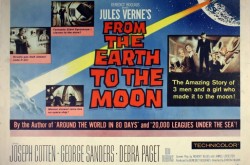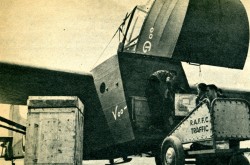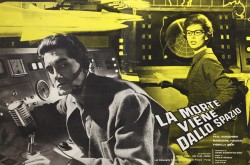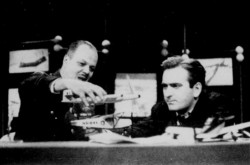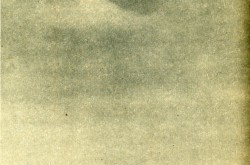“We all pray for a cloudless day:” The solar eclipse of 31 August 1932 in Québec, part 2

Hello, my reading friend passionate about astronomy. Would you like to continue without further delay this presentation devoted to the solar eclipse of August 1932?
Wunderbar!
Before undertaking that reading exercise, allow me to identify some of the eminent British researchers en route to Canada aboard the Canadian liner SS Montcalm operated by Canadian Pacific Steamships Ocean Services Limited for the purpose of observing said eclipse. Yes, the ones you saw on the photograph above a few seconds ago.
From left to right,
- with an arm raised and a hat in hand, Sir Frank Watson Dyson, Astronomer Royal and Director of the Royal Greenwich Observatory, in… Greenwich, England,
- with a hat in hand, John Forbes Cameron, mathematician and professor at the University of Cambridge, in… Cambridge, England, and
- with an arm raised, Frederick John Marrian Stratton, astrophysicist and professor at the University of Cambridge.
SS Montcalm had left the United Kingdom on 22 July. A large British team anxious to observe the eclipse was on board with, it was said, 10 metric tonnes (10 Imperial tons / 11 American tons) of scientific instruments.
Some important European researchers accompanied said team, including the Italian astronomer Guido Horn d’Arturo, director of the Osservatorio astronomico di Bologna, in… Bologna, Italy, and the German-Swiss astronomer Theodor Niethammer, director of the Astronomisch-Meteorologische Anstalt der Universität Basel, in… Basel, Switzerland. The Italian astronomer Giorgio Abetti, director of the Osservatorio Astrofisico di Arcetri, located not far from Florence, Italy, might, I repeat might, have crossed the Atlantic Ocean at the same time.
At the head of the forty or so Britons who arrived on Québec soil were Dyson, as well as his right hand person, the Scottish astronomer John Jackson, First Assistant at the Royal Greenwich Observatory. The Royal Astronomical Society appeared to be sponsoring the whole of the British initiative.
Aware of the importance of his passengers, the commander of SS Montcalm, Arthur Rothwell, had given them access to a vast space in the open air from where they could observe the skies if they felt like it. And they felt like it several times indeed.
Once in Québec, the city of course, the members of the British delegation visited many North American cities, mostly American ones in fact, not to mention the Lowell Observatory and Mount Wilson Observatory, in Arizona and California. The latter observatory then housed the largest telescope in the world, the Hooker telescope, whose mirror had a diameter of 2.54 metres (100 inches).
The delegation included 4 groups which planned to observe the eclipse separately, from different sites:
- the group from the Solar Physics Observatory of the University of Cambridge, led by Stratton, which planned to go to Magog, Québec;
- the group from the Royal Greenwich Observatory, led by Jackson, which planned to travel to Parent, Québec;
- the group from the Imperial College of Science and Technology, in London, England, led by the Englishman Herbert Dingle, physicist and professor at said college, which planned to go to the site of McGill University, in Montréal, Québec;
- the group led by the Englishman Reginald Lawson Waterfield, haematologist, amateur astronomer and director of the Mars Section of the British Astronomical Association, and Czech Vladimir Václav Heinrich, astronomer and professor at a well-known astronomy institute, the Astronomický Ústav Univerzity Karlovy, in Prague, Czechoslovakia, which planned to travel to Berlin, New Hampshire.
And yes, the Imperial College of Science and Technology was indeed mentioned in an August 2022 issue of our blog / bulletin / thingee. Go get yourself a golden star, my reading friend. You are also right to believe that researchers from McGill University would rub shoulders with those from the Imperial College of Science and Technology on the day of the eclipse.
Incidentally, the group led by Stratton was to have as neighbour an American group led by a renowned Canadian-American astronomer, Samuel Alfred Mitchell, director of the Leander McCormick Observatory of the University of Virginia. Said group included researchers from at least 3 other American universities.
Yours truly was unable, however, to confirm that the American researchers were also housed in the central house of the Hermitage Club, a private golf club located near Magog, a very chic club which counted among its members wealthy Montrealers.
At least two researchers from Dalhousie University, in Halifax, Nova Scotia, may have joined the teams based in Magog towards the end of August. The same could be said of an English astronomer and director of the Union Observatory, located in South Africa, Harry Edwin Wood, not to mention the Anglo Irish director of the Armagh Observatory, in Northern Ireland, United Kingdom, William Frederick Archdall Ellison.
Regarding the question which calcinates your lips, my reading friend, the group from the Royal Greenwich Observatory was going to Parent, an isolated village 300 or so kilometres (185 or so miles) north of Montréal, because that was the accessible location where the total solar eclipse would be visible the longest, it was said.
I urge you to note that the group from the University of Cambridge included a young Canadian physicist, William Lusk “Bill” Webster, who worked at the Cavendish Laboratory, the world renowned physics laboratory at that prestigious university.
It should be noted that, during the Second World War, Webster occupied various important positions in the United Kingdom (Directorate of Scientific Research of the Ministry of Supply and Air Defence Research and Development Establishment of the War Ministry and / or Radar Research and Development Establishment of the Ministry of Supply) and in the United States (British Central Scientific Office of the British Supply Council in North America and American office of the Department of Scientific and Industrial Research).
It should also be noted that Webster’s older brother, John Clarence Webster, Junior, was well known within the Canadian aeronautical community. Fascinated by aviation, that Montréal private pilot had died in Saint-Hubert, Québec, in the crash of his private plane, in August 1931, while practicing aerobatic maneuvers in anticipation of the coming to that place, in August, of the Trans-Canada Air Pageant, the most important aeronautical activity which took place in Canada during the interwar period.
Devastated by the death of his son, John Clarence Webster, Senior, launched the John C. Webster Memorial Trophy Competition. The Webster Trophy was / is awarded annually (1932-39 + 1947-54 + 1980-2019) to the top Canadian amateur / private pilot. The famous Canadian sculptor Robert Tait MacKenzie imagined for that trophy a bronze figure of the Greek mythological character Icarus representing youth and flight.
The Webster Trophy is for all intent and purposes on permanent display at the stunning Canada Aviation and Space Museum in Ottawa, Ontario, but back to our story.
Before I forget, did you know that helium was discovered in August 1868 when the French astronomer Pierre Jules César Janssen observed our star of the day during a total solar eclipse? The English astronomer Joseph Norman Lockyer also discovered that rare gas just a few days later.
Better yet, the aforementioned Dyson organised a dual expedition whose aim was to use the total solar eclipse of May 1919 to observe the position of certain stars from Sobral, Brazil, and from the island of Principe, which was then part of the Portuguese colony of São Tomé and Príncipe, off the coast of West Africa. These observations showed that the position of these stars, located near the Sun during the eclipse, differed from their position at other times, which showed that their light had been bent by the massive gravity of our star, which proved the validity of the general theory of relativity put forward by German theoretical physicist Albert Einstein.
The role played in this project by the English astronomer, mathematician and physicist Arthur Stanley Eddington was of such importance that it was / is commonly referred to as the Eddington experiment, but back to our story.
The day after the departure of SS Montcalm, 23 July, the children’s page of the major Montréal daily La Presse included a text from the director of that weekly page, Grand Maman, who was probably not a grandmother, or even a woman. Entitled, in translation, ‘This total eclipse of the sun,” the text in question explained what that was all about. Grand Maman mentioned the use of equipment, dark / smoked glasses or photographic film for example, to observe the eclipse well – tools which might not have offered adequate protection. Indeed, Grand Maman did not mention the danger to vision posed by an eclipse.
On 31 July, a renowned French amateur astronomer left Europe aboard the British liner RMS Ascania of Cunard Steamship Company Limited. The French ministère de l’Éducation nationale was sending Count Aymar Eugène de La Baume Pluvinel to Québec, to Louiseville more precisely, in order to observe the eclipse. The latter being 71 years old, we can assume that a small team accompanied him. One only needs to mention a young French astronomer, Daniel Barbier, from the Observatoire de Marseille, in… well, you know where. At least two other French astronomers, including Jean Bosler, director of that same observatory, joined the team at the end of August.
Brother Magloire-Robert, born Étienne Poitras, of the Congrégation des Frères des écoles chrétiennes, science teacher (physics, mathematics and astronomy) at the Collège Mont Saint-Louis of Montréal, one of the rare francophone Quebecer astronomers of the time, also planned to go to Louiseville toward the end of August.
Members of the Royal Astronomical Society of Canada (RASC) planned to go to Louiseville as well, as did members of the Dominion Meteorological Service, as the Meteorological Service of Canada was known back then.
It should be noted that some American universities planned to send more or less large teams to Québec. The same went for at least one Canadian university outside Québec. Clarence Augustus Chant, at the time the one and only astronomer at the University of Toronto, in…Toronto, Ontario, led the team in question. Considered by some to be the father of Canadian astronomy, that gentleman was of course mentioned in several issues of our blog / bulletin / thingee, since April 2019. Chant and his people went to Saint-Alexis-des-Monts, in the Saint-Maurice River region.
While the Dominion Observatory, located in Ottawa, was not outdone, the fact was that its staff did not begin to prepare until shortly before mid-August. The team led by Robert Meldrum Stewart, a Canadian astronomer and mathematician, the Dominion Astronomer no less in fact, was also going to the Saint-Alexis-des-Monts region.
Nor should we forget the team led by the director of the École supérieure de chimie at Université Laval in Québec, Québec, abbot Alexandre Vachon, and a professor from the Faculté des Arts of that institution, abbot Rosario Benoit. Said team went somewhere in the Eastern Townships. The team of the director of the Académie commerciale de Québec, in… Québec, brother Germain of the Congrégation des Frères des écoles chrétiennes, on the other hand, went to Magog. And yes, all of these men were members of the catholic clergy.
Arthur Villeneuve, an engineer and professor (electrical engineering) at the École polytechnique de Montréal, led the team of professors and former students of that institution which intended to study the impact of the eclipse on the reception and transmission of radiotelegraph signals on the site of the Collège Bourget, a secondary school founded in 1850, in Rigaud, Québec, by the Congrégation des clercs de Saint-Viateur.
A team from the Université de Montréal, in… Montréal, ultimately decided to settle on the site of that institution of higher learning. At its head were the jesuit Joseph Ernest Gendreau, director of studies at the Faculté des sciences of the Université de Montréal and founding director of the Institut du radium de Montréal et de la province de Québec, as well as Joseph Demers, professor of physics at the Université de Montréal. Incidentally, both Gendreau and his institute were mentioned in an April 2019 issue of our blog / bulletin / thingee.
Before I forget, on the eve of the eclipse, in other words, on 30 August, Gendreau gave a lecture at the Université de Montréal. You obviously know the topic.
Other members of the catholic clergy, members of the Society of Jesus / Societas Iesu more specifically, set up instruments on Saint-Ignace Island, very close to Saint-Ignace-de-Loyola, Québec, not far from Sorel. These jesuits worked in Montréal, at the Scolasticat de l’Immaculée-Conception, at the Collège Sainte-Marie and at the Collège Jean-de-Brébeuf.
Such expeditions were not necessarily walks in the park. Nay. In early August 1932, for example, high winds toppled and / or tore tents of the aforementioned Solar Physics Observatory group at the University of Cambridge. A tool box weighing about 270 kilograms (600 pounds) was knocked over by these winds. If the precious instruments under the tents were not damaged, residents of the Eastern Townships were not so fortunate.
A lady welcoming a group of friends and a farmer escorting his cows to a barn were killed by lightning. Several barns and farm buildings, also struck by lightning, were destroyed by fires, while torrential rains ravaged crops in more than one field.
Around mid-August, with the date of the eclipse fast approaching, representatives of McGill University reminded municipal (Montréal) and provincial (Québec) authorities, as well as electricity production and distribution companies, that the period of more or less total darkness could endanger the safety of people circulating in the streets. This being said (typed?), astronomers did not want all the streetlights to be on, thus spoiling their observations and depriving Mrs. and Mr. Everyone of a striking spectacle. The absence of a decision concerning a brief period of leave, an idea proposed as early as April, it should be remembered, also worried the researchers a little.
While it was nice to see how much scientists wanted to observe the eclipse, the fact was that other people had other goals. The Société d’agriculture du comté de Sherbrooke, organiser of the 1932 edition of the Exposition agricole de Sherbrooke, like others before and after that date, for example, intended to take advantage of that astronomical event to increase the number of visitors to the site. In fact, if 29 and 30 August were to be the days of decorations and children, 31 August was to be the day of the eclipse. A beauty contest held that day would result in the crowning of the Reine des Cantons de l’Est.
Yours truly also came across an advertisement from a small publisher / printer / stationer from Montréal and Beauceville, Québec, L’Éclaireur Incorporée, published between 20 and 23 August in at least 4 daily Québec newspapers, namely La Presse, La Tribune of Sherbrooke, Le Nouvelliste of Trois-Rivières and L’Action catholique of Québec. Said advertisement, also published in the 28 August edition of the Montréal weekly Le Petit Journal, praised the merits of a brochure, in French I presume, which explained the wonders of the eclipse. That publication, accompanied by a photographic film allowing the phenomenon to be observed more or less safely, sold for the modest sum of 30 cents, which corresponds to approximately $6.20 in 2022 currency. A person buying a dozen brochures was granted a 10 % discount. That publication was / is obviously extremely rare, if not impossible to find as of 2022.
Moreover, that publication was not the only one that Quebecers keen on astronomy could obtain in August 1932. Nay. The Compagnie provinciale de publication Limitée of Montréal published a 24-page brochure, Petite astronomie populaire décrivant les merveilles de l’univers et l’éclipse totale du soleil, 31 août 1932. That publication was / is also obviously extremely rare, if not impossible to find as of 2022.
Mind you, the brochures of L’Éclaireur and Compagnie provinciale de publication might have been one and the same. I shall continue my research on this.
And yes, you are absolutely right, Chantler & Chantler Limited of Toronto sold an otherwise unidentified Eclipse-O-Scope for the low price of 10 cents, which corresponds to about $2.05 in 2022 currency. Founded in 1930 by Ernest and John Chantler, that small firm sold innovative plastic products. It promoted the Eclipse-O-Scope in several French and English daily newspapers in Montréal (and elsewhere???).
A brief digression if I may. A cash-hungry Montréal nogoodnik stole a box containing 250 Eclipse-O-Scopes on the day of the eclipse. I dare to hope that he did not sell many.
Before I forget, La Presse informed its readership that it was possible to obtain an unidentified protective screen by sending 10 cents, that is about $ 2.05 and a stamped (?) return envelope to Yerkes Observatory, in Williams Bay, Wisconsin – the birthplace of modern astrophysics, operated by the University of Chicago. That indication having appeared on 26 August, one can wonder if it was not a tad too late. Anyway, let us move on.
Aware of the growing interest of many Quebecers, La Presse published a well-illustrated text on the children’s page of its 20 August edition. “The Eclipse and Our Province,” its translated title, was the work of an author with a slightly amusing pseudonym derived from the name of a Polish astronomer / diplomat / economist / mathematician / translator, canon Nicolaus Copernicus. Co Pernic / C.O. Pernic offered a series of activities that young and less young readers of the daily could carry out without difficulty.
One of these concerned listening to a special program from the Montréal radio station CKAC, then owned by La Presse and whose powerful transmitter was located in Saint-Hyacinthe, Québec. Pernic asked that people note the differences between the sounds and words transmitted during the program, and this before and during the eclipse.
The special program in question would include comments from 3 experts, all 3 members of the clergy, of the roman catholic church more precisely:
- the aforementioned Gendreau,
- monsignor Charles Philippe Choquette, vice-superior of the Séminaire de Saint-Hyacinthe and former professor emeritus of astronomy at the Université de Montréal, and
- the aforementioned brother Magloire-Robert.
These experts would comment on the eclipse from Montréal, Saint-Hyacinthe and Montréal, by telephone.
A lavishly illustrated two-page article, entitled, in translation, “A Night in Broad Daylight in the Afternoon of 31 August 1932,” also appeared in La Presse on 27 August. An accompanying text underscored that CKAC would broadcast a talk by brother Magloire-Robert the following evening.
Speaking (typing?) of a radio station, CFCF, then owned by Canadian Marconi Company of Montréal, intended to offer excellent coverage to its listeners. It planned to have two observation posts, in Magog and Montréal, on the site occupied by the University of Cambridge team and on the roof of a McGill University building.
CFCF even planned to have a flying observation post, an aircraft from Canadian Airways Limited of Winnipeg, Manitoba, the largest private air transport firm in Canada between the two world wars and a firm mentioned in several issues of our blog / bulletin / thing since January 2018. The person who would comment on the course of the eclipse from that privileged point of view was / is one of the great popularisers of science of the 20th century, specialising in astronomy, the astronomer for children it was said, the Irish American Mary Proctor.
A certain F.H. Coates of Winnipeg, Manitoba, perhaps, unless it was a certain D.P.R. Coats of somewhere else, replaced her at the last minute, however.
From the looks of it, after her withdrawal, Proctor chose to write a brief text for a staunchly conservative newspaper in London, England, The Daily Telegraph, rather than cooperate with the British Broadcasting Corporation, a government-owned British broadcasting corporation mentioned many times in our blog / bulletin / thingee since October 2018.
CFCF planned to call on the Canadian National Railways Radio Department and the American firm National Broadcasting Company to broadcast its reports on Canadian and American soil, as far away as California.
Would you believe that Canadian National Railway announced a train excursion between Montréal and Sorel, Québec, on the day of the eclipse? Better yet, Canada Steamship Lines Limited of Montréal announced a boat trip from Montréal to Lake Saint-Pierre, near Sorel. Several people familiar with astronomy, teachers (and students?) from McGill University, would be on board SS Richelieu in order to answer the questions of the excursionists with tickets. Better yet, again, Canadian Airways offered a special service between Ottawa and Montréal on the day of the eclipse.
Among the many American tourists who travelled to Québec to better see the eclipse, allow me to mention Mrs. Hugh H. Cuthrell, in other words Faith Baldwin, a well-known novelist who had by then published more than 20 romance novels very popular with a female audience. She apparently hoped that the eclipse would provide her with an interesting plot. Baldwin would ultimately publish 60 or so novels between 1921 and 1977, not to mention countless short stories, but I digress.
Would you believe that Francis Joseph “Shag” Shaughnessy, general manager of the Montreal Royals baseball team of the International League, announced towards the end of August that sunglasses, provided (free of charge?) by Imperial Tobacco Company of Canada Limited of Montréal, a subsidiary of the British firm British American Tobacco Company Limited, would be distributed on 31 August? Better yet squared, the baseball game to be held that day between the Montréal team and the Albany Senators of Albany, New York, would be interrupted during the eclipse to allow spectators who wished to do so to jump on the field to better observe the phenomenon.
The solar eclipse even made its entry into provincial politics towards the end of August 1932. Indeed, the Premier of Québec was not really in a hurry to make public the fact that, for the first time in nearly 35 years, the provincial government was facing a deficit, a consequence of the economic crisis which was hitting the world hard. Louis-Alexandre Taschereau tried to joke (in translation, “The eclipse of surpluses will occur at the same time as the eclipse of the sun.”) but several / many Québec dailies were not in the mood to laugh.
Before I forget, towards the very end of August, the Sherbrooke city council came out in favour of a civic holiday on 31 August – an initiative proposed by the Chambre de commerce de Sherbrooke. Places of business were thus closed during the afternoon to allow Sherbrooke residents to… visit the site of the Exposition agricole de Sherbrooke and, if they felt like it, observe the eclipse.
As far as Montréal was concerned, the Comité exécutif decided against a civic holiday applying to city staff. You see, the deadline for payment of water and business taxes was actually the day following the eclipse, in other words 1 September. Some whispered that the mayor of Montréal, Louis Édouard Fernand Rinfret, would have liked to be more open-minded. An openness comparable to that of the managements of large Montréal department stores such as Henry Morgan & Company Limited, T. Eaton Company Limited and Dupuis Frères Limitée which closed their establishments so that their staff would be able to see the eclipse – if the sky was clear of course.
As you may well imagine, the aforementioned trio of department stores was mentioned in previous issues of our blog / bulletin / thingee, in November 2021 in the case of Henry Morgan & Company, in several issues since January 2019 in the case of T. Eaton, and in 3 issues (December 2018, November 2021 and May 2022) in the case of Dupuis Frères. You are welcome.
And yes, on 31 August, the very day of the eclipse, Dupuis Frères held an “eclipse” sale during which it offered magnificent radio receivers manufactured by Northern Electric Company Limited of Montréal, worth more than $ 100, at the unbeatable price of $ 39 – which translated to just over $ 2 050 and $ 800 in 2022 currency.
As you may well imagine, again, the journalistic coverage peaked as August drew to a close. On 31 August, for example, the Montreal daily L’Illustration published a portrait of the Netherlander jesuit and astronomer Johan Willem Jakob Antoon Stein, director of the Vaticanum Observatorium / Specola Vaticana. It also published a photograph of the leader of the Japanese team, astronomer Hirayama Kiyotsugu of the Tōkyō Tenmondai, the astronomical observatory in Tokyo, Japan. Both were in the United States to observe the eclipse.
Dare I point out that the Roman catholic church removed from its list of prohibited books, the Index Librorum Prohibitorum, uncensored versions of Copernicus’ 1543 epoch making book De revolutionibus orbium coelestium, in English On the revolutions of the heavenly spheres, which stated that the Earth turned around the Sun, and not the other way around, in… 1835?
Worse still, the father of observational astronomy, modern physics and modern science according to some / many and a strong defender of Copernicus’ heliocentric theory, a theory deemed to be scientifically false and theologically erroneous if not heretical in 1616, Galileo di Vincenzo Bonaiuti de’ Galilei, strongly suspected of heresy for that defence and threatened with torture in 1633 by the Congregatio pro sancta inquisitione / Congregatio sanct inquisitionis hæreticæ pravitatis, was formally and publicly cleared of any wrongdoing by the Roman catholic church in… October 1992.
A brief digression if I may. All right, all right, another brief digression. On 27 August, La Presse announced that one of the French researchers who wished to observe the eclipse on Canadian soil was general Gustave Auguste Ferrié, an engineer and pioneer in broadcasting known worldwide. Two days later, Georges Pelletier, the director of another Montréal daily, Le Devoir, pointed out that Ferrié had been dead for over a year. Big oops. In fact, Ferrié had died in February 1932, at the age of 63. Small oops.
Another brief digression. A Montréal humorous / satirical weekly, Le Canard, offered a brief comment to its readership in its 29 August edition, in translation: “It is on 31 August that the famous total eclipse of the sun will take place. It is claimed that it will be as dark as a politician’s conscience.”
And that is all that yours truly intends to say (type?) on the solar eclipse of 31 August 1932 and the 50 or so groups (!) which observed it on Canadian and American soil. I therefore wish you a good...
What is it, my reading friend? You look pretty crossed. You want to know how the eclipse itself unfolded?! Would an all in all very short text be satisfactory? Nope?! The production team of the American television series Game of Thrones gave that a shot in 2019 and that shortened final season did not please you one bit, you say? Do not get your knickers in a knot, my reading friend, I will see what I can do.





































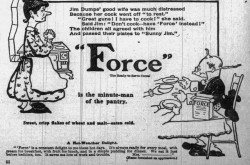
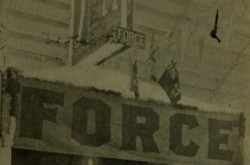
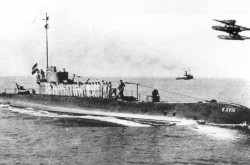
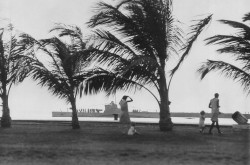
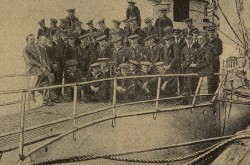
![A block of photographs showing some of the people involved in the bombing of beluga whales in the estuary and gulf of the St. Lawrence River. Anon., “La chasse aux marsouins [sic]. » Le Devoir, 15 August 1929, 6.](/sites/default/files/styles/thumbnail_7/public/2024-09/Le%20Devoir%2015%20aout%201929%20page%206.jpg?h=584f1d27&itok=TppdLItg)
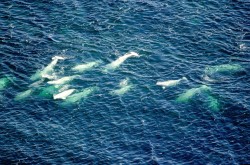
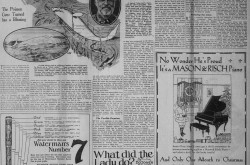

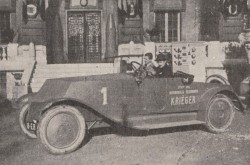
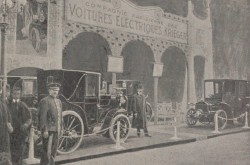
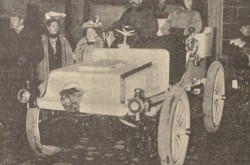
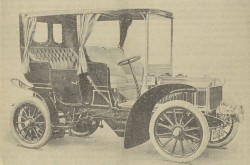

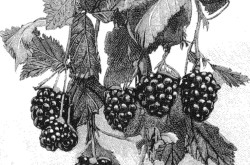
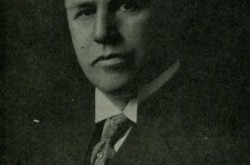
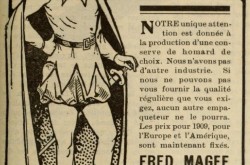
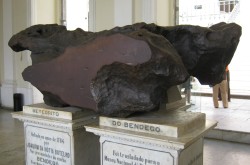
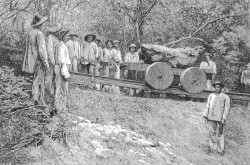
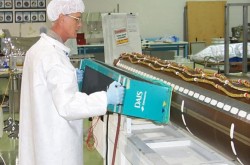

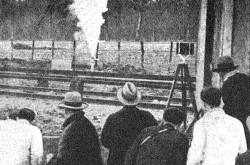
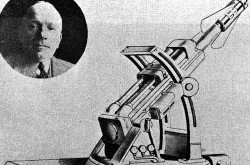
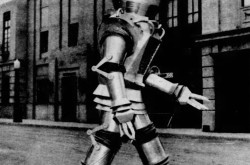

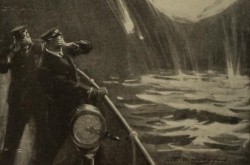
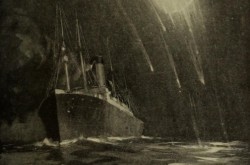
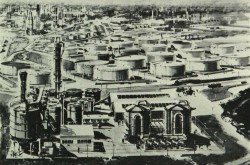

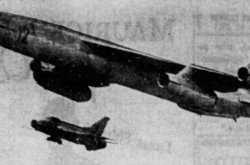
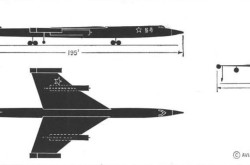
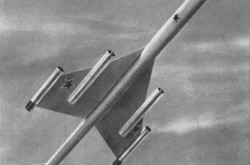
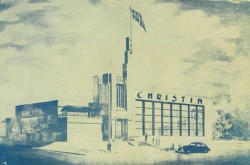
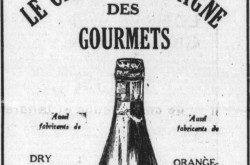
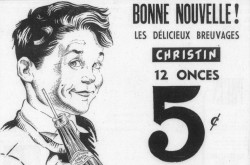
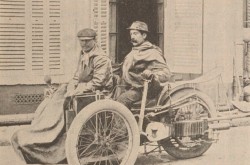
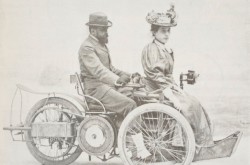
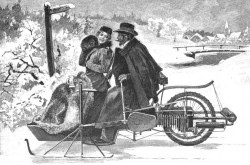
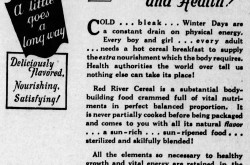

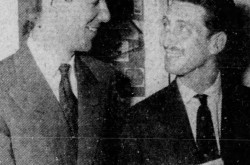
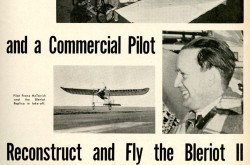
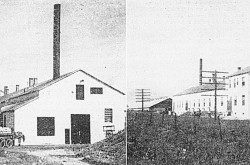
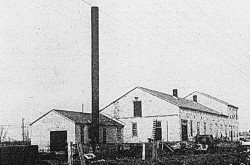



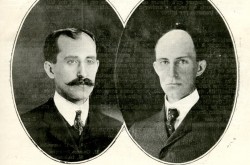

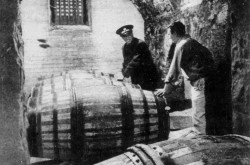
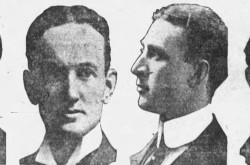
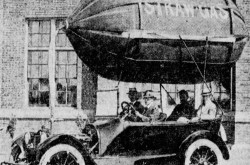
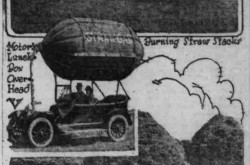
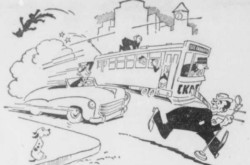

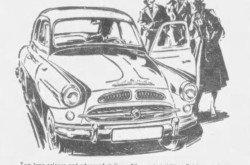
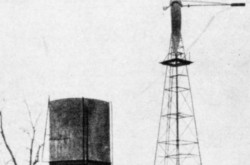
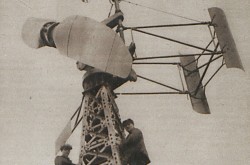
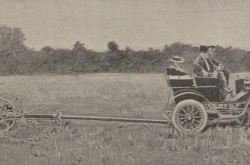

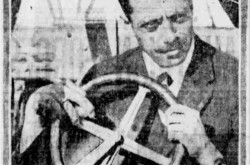
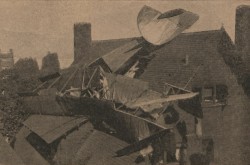
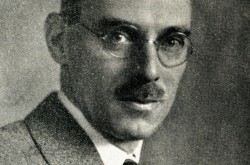
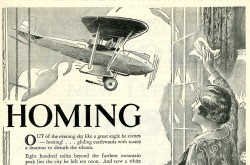
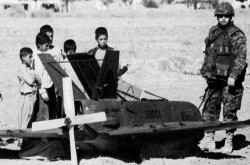
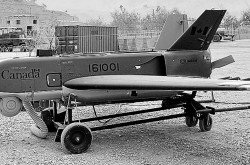
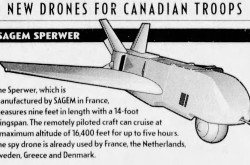
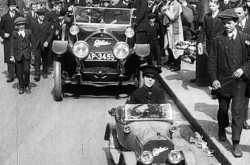
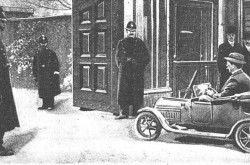
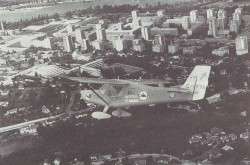
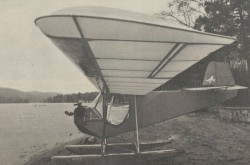

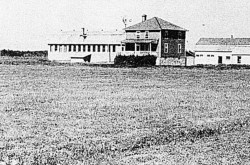
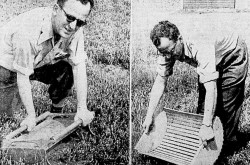
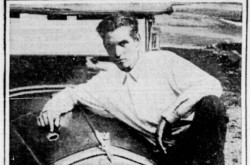
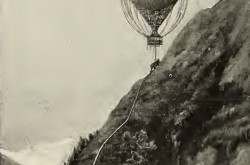
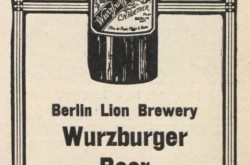

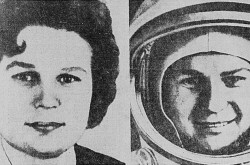
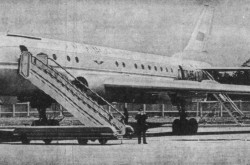
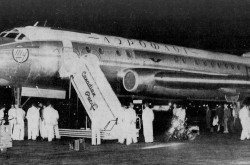
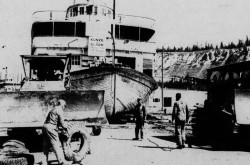
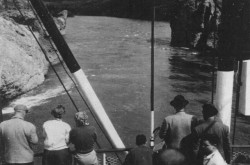
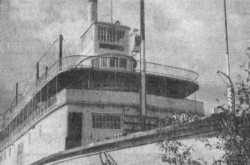
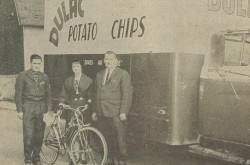
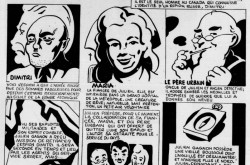
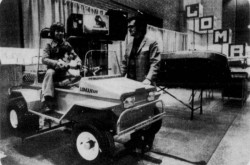
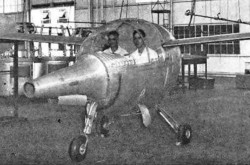
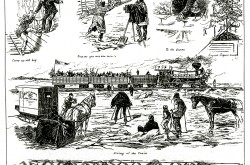
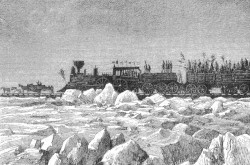
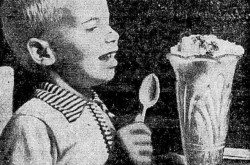
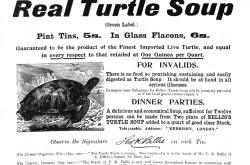
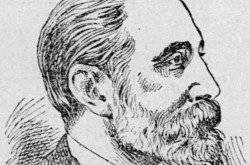
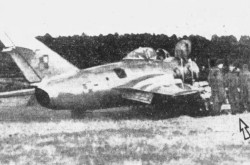
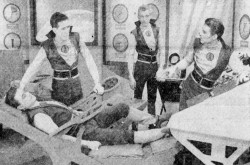
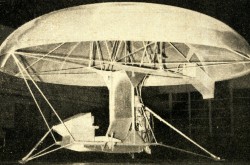
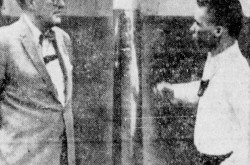
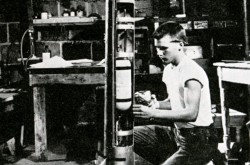
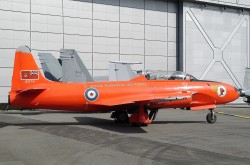
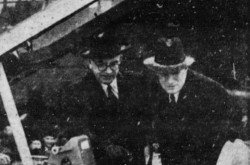
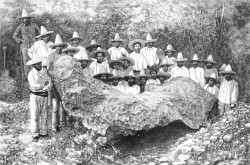
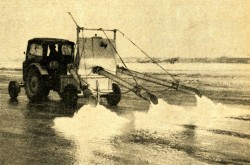
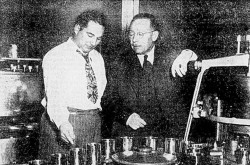
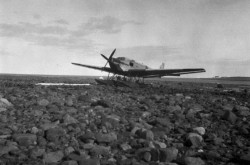
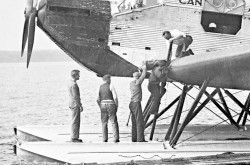
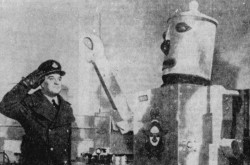
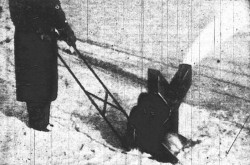
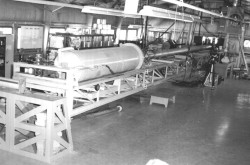
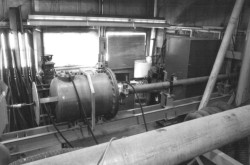
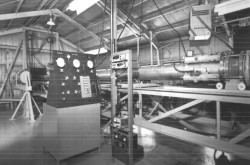
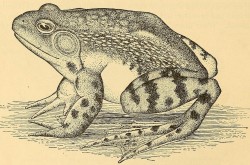
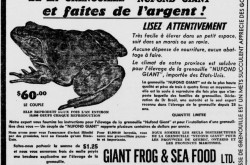
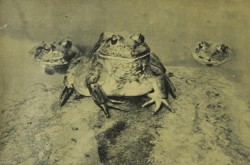
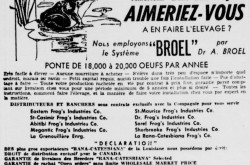
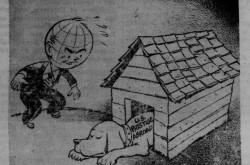
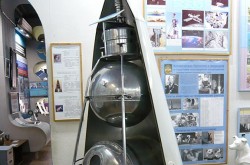
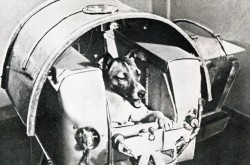
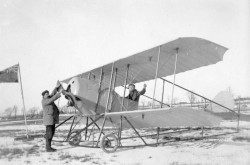
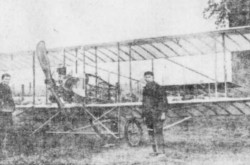
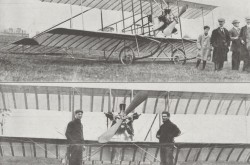
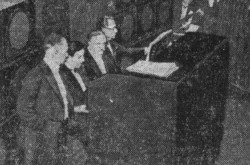
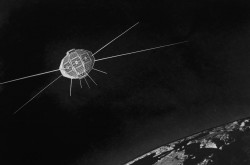
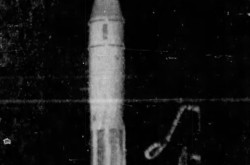
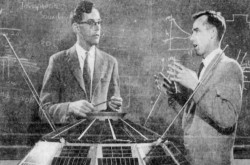
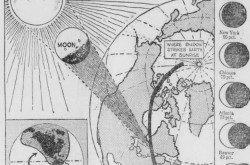

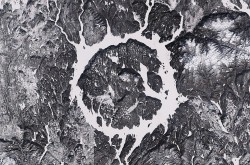
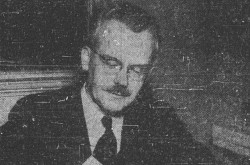
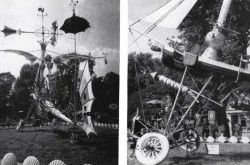
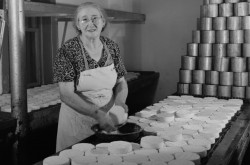
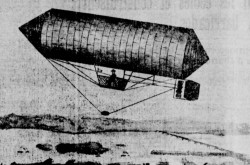
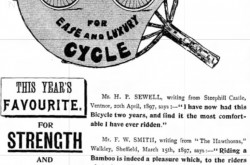
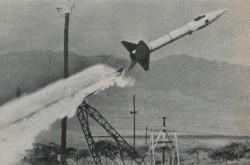
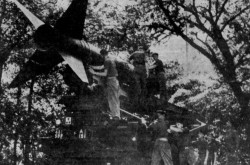
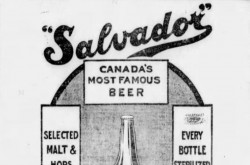

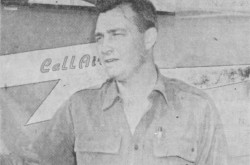
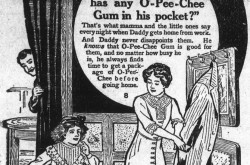
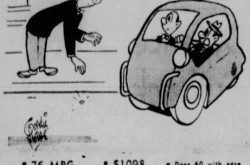
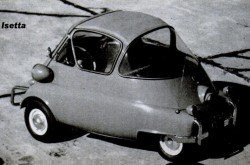
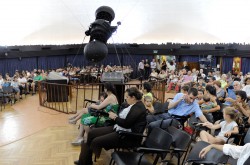
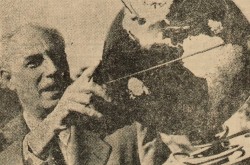
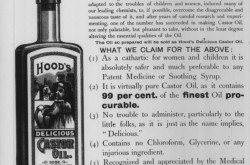
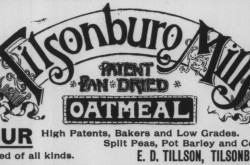
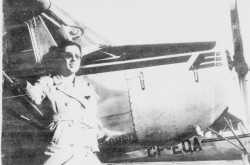
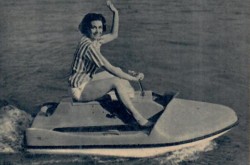

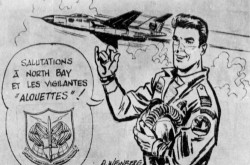
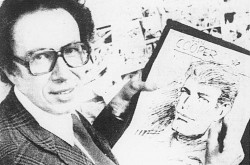
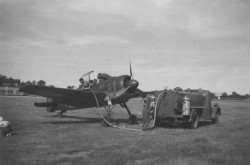

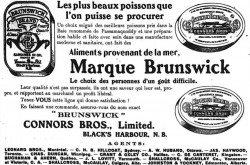


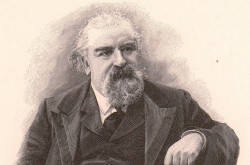
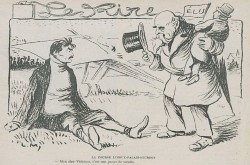
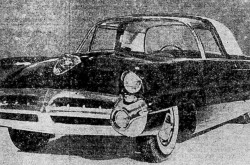
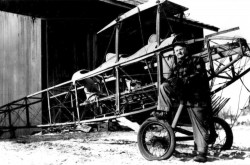

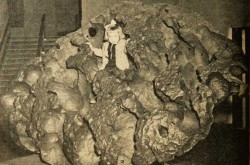
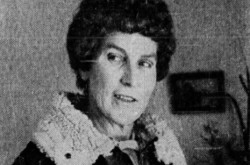
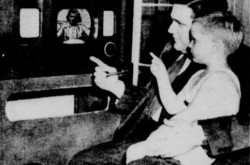
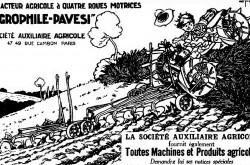
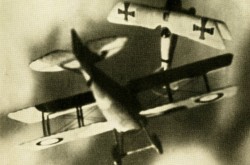
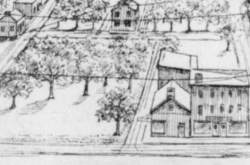
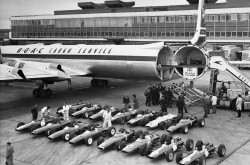
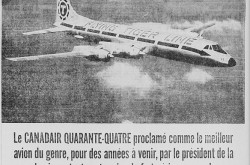
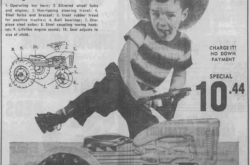
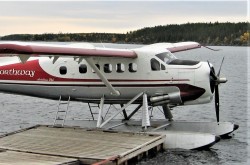
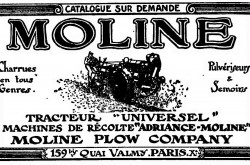
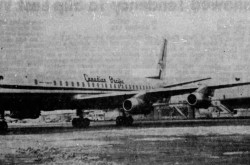
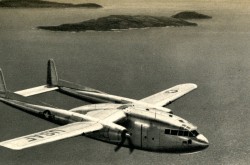
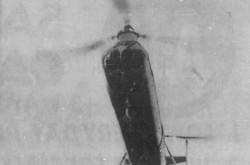

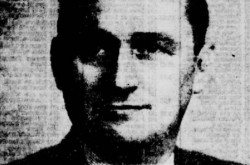
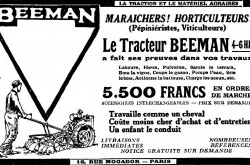
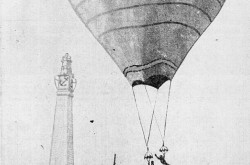

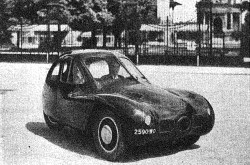
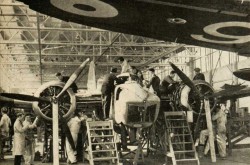
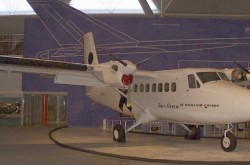
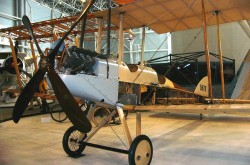
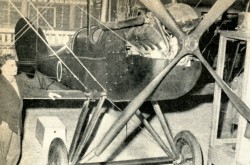

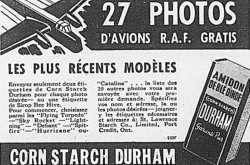

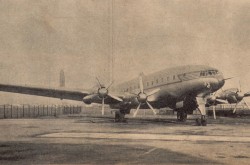
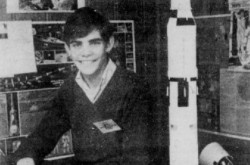
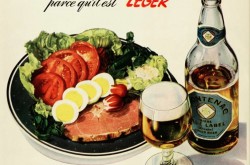
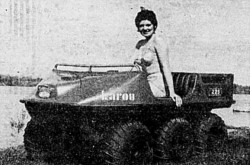
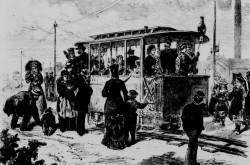
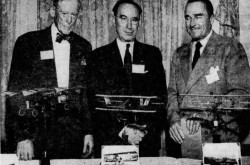
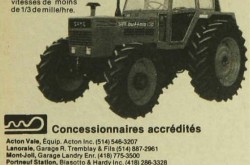
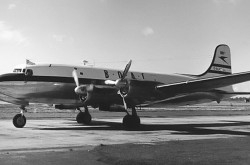
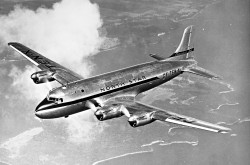
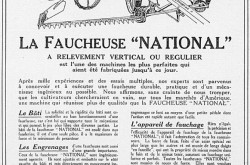
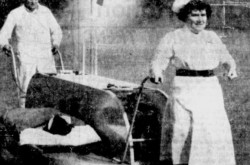
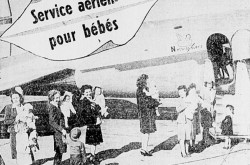
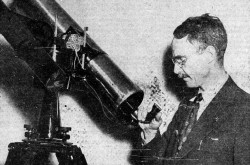
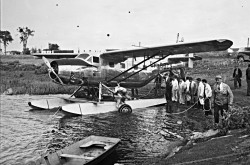
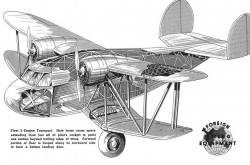
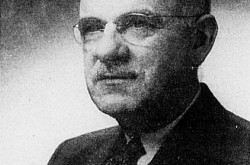
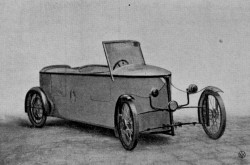
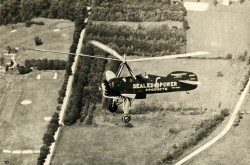
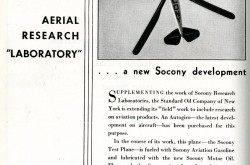
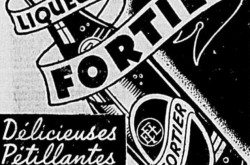
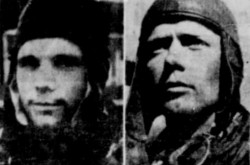
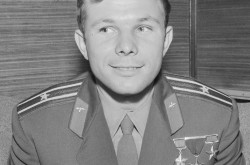
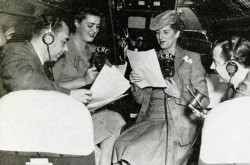
![Peter Müller at the controls [sic] of the Pedroplan, Berlin, Germany, March 1931. Anon., “Cologne contre Marseille – Le mystère du ‘Pédroplan.’ [sic]” Les Ailes, 2 April 1931, 14.](/sites/default/files/styles/thumbnail_7/public/2021-04/Les%20Ailes%202%20avril%201931%20version%20big.jpg?h=eafd0ed4&itok=WnBZ5gMf)
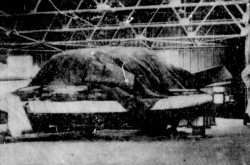
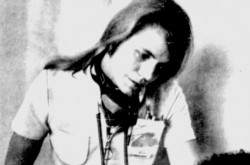
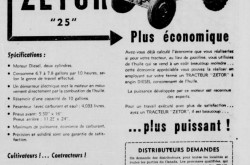
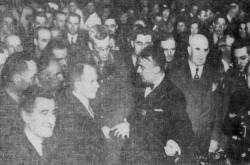
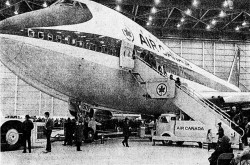
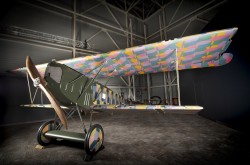
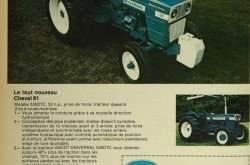
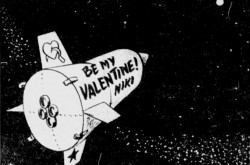
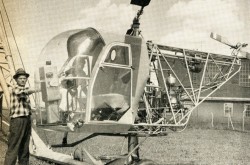

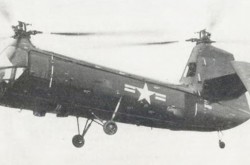
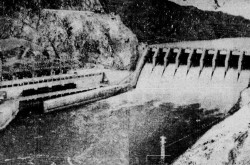
![One of the first de Havilland Canada Chipmunk imported to the United Kingdom. Anon., “De Havilland [Canada] DHC-1 ‘Chipmunk.’” Aviation Magazine, 1 January 1951, cover.](/sites/default/files/styles/thumbnail_7/public/2021-01/Aviation%20magazine%201er%20janvier%201951%20version%202.jpg?h=2f876e0f&itok=DM4JHe5C)
